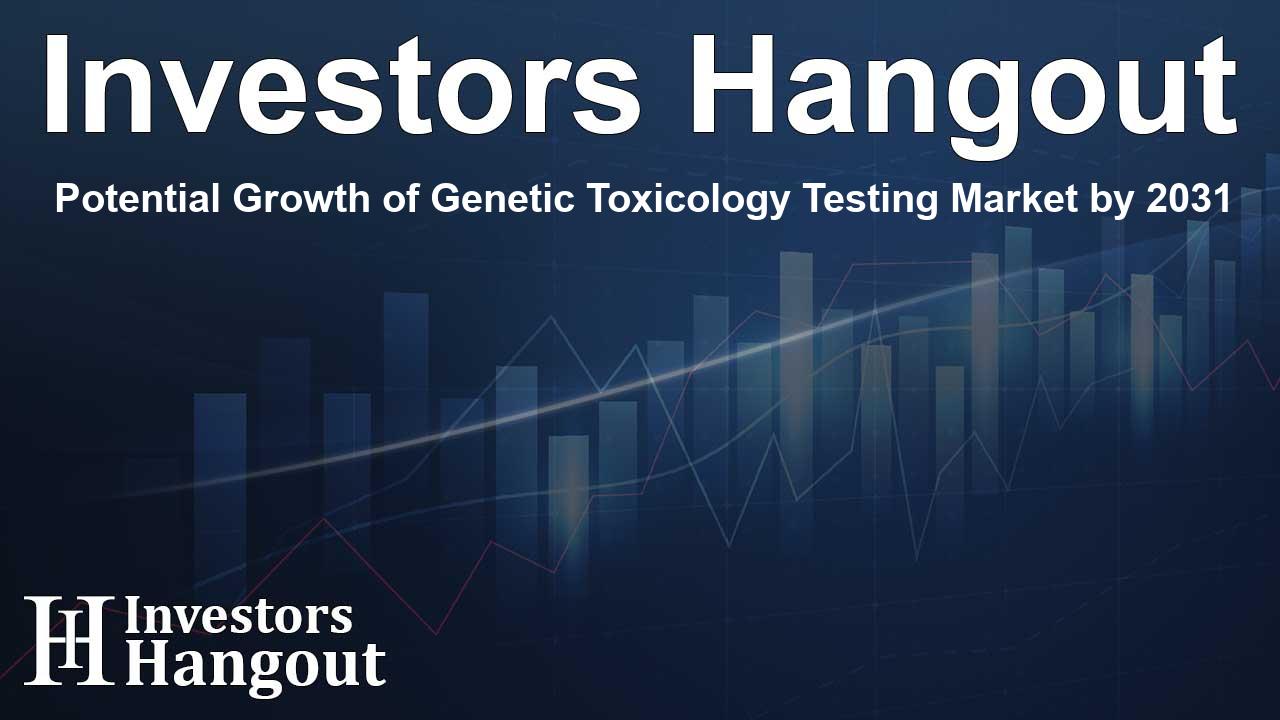Potential Growth of Genetic Toxicology Testing Market by 2031

Understanding the Genetic Toxicology Testing Market
This evolving market is projected to experience remarkable growth, with estimates suggesting that the genetic toxicology testing market could reach a valuation of $3.84 billion by the year 2031, achieving a compound annual growth rate (CAGR) of 12.7% from 2024 to 2031. The surge in personalized medicine and a growing focus on improving genetic health are accelerating the expansion of this market.
Key Market Drivers
Several factors fuel the growth of the genetic toxicology testing market. One prominent driver is the increasing recognition of genetic testing's importance in modern healthcare. As more individuals seek tailored treatment options and preventive healthcare measures, the need for rigorous testing has become essential.
Technological Advancements
Advancements in genetic technologies are transforming how tests are conducted, leading to more accurate and efficient results. These innovations not only enhance performance but also contribute to more stringent regulations aimed at promoting genetic toxicology testing.
Regulatory Support
The regulatory landscape plays a crucial role by imposing stricter mandates that require genetic testing in various sectors, including pharmaceuticals and cosmetics. This regulatory support is expected to further stimulate market growth as companies adapt to meet compliance standards.
Market Segmentation
The genetic toxicology testing market is notably diverse and can be segmented based on several criteria, including type, product, application, and geographical region.
Segmentation by Type
The market divides primarily into In Vitro and In Vivo testing. Each type serves different purposes in assessing genetic toxicity and is vital for various applications.
Segmentation by Application
Applications are categorized into key sectors: pharmaceuticals and biotechnology, food industry, and cosmetics. The rising demand for safe products and stringent testing regulations are crucial factors here, especially in the cosmetics segment.
Emergence of Reagents & Consumables
Reagents and consumables are pivotal in the genetic toxicology testing process, making them major revenue contributors for companies in the market. Their recurring use throughout testing workflows—from preparation to analysis—ensures a consistent demand.
Regional Analysis
The landscape of the genetic toxicology testing market is heavily influenced by geographical factors. North America is leading the way, largely due to the concentration of major biotechnology companies that foster significant investments in research and development.
North America's Market Dominance
This region's robust infrastructure requirements and high demand for cutting-edge genetic technologies position it as the dominant force in the global market. Expectations indicate that the United States will maintain its status as a market leader through 2031.
Challenges to Overcome
Despite promising growth prospects, challenges exist. One key restraint is the complexity of interpreting genetic test results, which can hinder widespread acceptance and application in the industry. Ethical concerns surrounding genetic information privacy also pose significant hurdles.
Addressing Ethical Concerns
Addressing these ethical challenges is crucial for the sustained growth of the genetic toxicology testing market. As stakeholders work together to establish clear guidelines and best practices, confidence among consumers and professionals is likely to grow.
Conclusion and Future Outlook
The genetic toxicology testing market is poised for substantial growth as the demand for personalized medicine and rigorous safety standards continues to rise across industries. Companies that adapt to these changes and leverage technological advancements will be well-positioned to thrive in this evolving landscape.
Frequently Asked Questions
What drives the growth of the genetic toxicology testing market?
The growth is primarily driven by the rising demand for personalized medicine and the emphasis on genetic health improvement.
How does regulatory support affect the market?
Stricter regulations promote the necessity of genetic testing across various sectors, boosting market growth.
What are the major applications of genetic toxicology testing?
Major applications include pharmaceuticals, biotechnology, the food industry, and cosmetics.
How significant are reagents and consumables to the market?
Reagents and consumables are crucial as they account for significant revenue due to their essential role in testing processes.
What challenges does the genetic toxicology testing market face?
Key challenges include complex result interpretation and ethical concerns regarding genetic data privacy.
About Investors Hangout
Investors Hangout is a leading online stock forum for financial discussion and learning, offering a wide range of free tools and resources. It draws in traders of all levels, who exchange market knowledge, investigate trading tactics, and keep an eye on industry developments in real time. Featuring financial articles, stock message boards, quotes, charts, company profiles, and live news updates. Through cooperative learning and a wealth of informational resources, it helps users from novices creating their first portfolios to experts honing their techniques. Join Investors Hangout today: https://investorshangout.com/
Disclaimer: The content of this article is solely for general informational purposes only; it does not represent legal, financial, or investment advice. Investors Hangout does not offer financial advice; the author is not a licensed financial advisor. Consult a qualified advisor before making any financial or investment decisions based on this article. The author's interpretation of publicly available data shapes the opinions presented here; as a result, they should not be taken as advice to purchase, sell, or hold any securities mentioned or any other investments. The author does not guarantee the accuracy, completeness, or timeliness of any material, providing it "as is." Information and market conditions may change; past performance is not indicative of future outcomes. If any of the material offered here is inaccurate, please contact us for corrections.